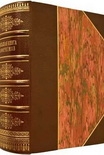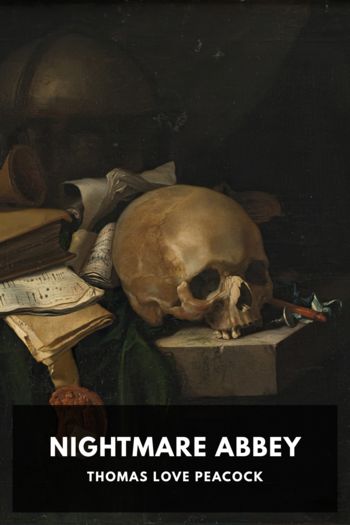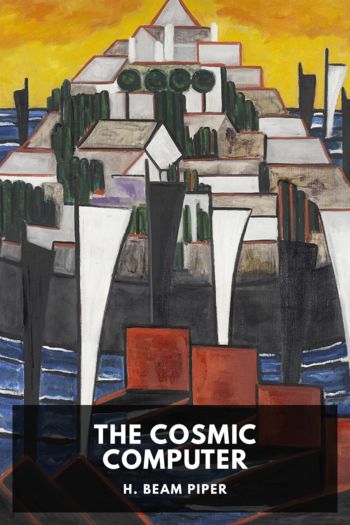Gluck, Diana Souhami [good novels to read in english txt] 📗

- Author: Diana Souhami
Book online «Gluck, Diana Souhami [good novels to read in english txt] 📗». Author Diana Souhami
Gluck went on producing good work though she took to spending longer on each picture. The deadline of an exhibition or the pressure of a commissioned portrait made her paint quickly. Left to herself she worked with a sense of timelessness and with exquisite precision. To visitors to her studio, she would show, under a magnifying glass, the silken undersides of petals of flowers painted in six colours with brushes pared to a few hairs. A painting of violets, begun in November 1940, took her about seven months. The villagers of Plumpton came to see it when it was done. The Bougheys commissioned it and paid her a hundred guineas. She described her ‘vision’ of its shape – a votive offering in a bronze vase, formal in composition, clean and cool in colour, the violets wiry and strong despite their delicacy.
After ‘Violets’ came a tangle of pink convolvulus and grasses. Called ‘Pleiades’, it is a small piece, 19 × 24 cm. She worked out of doors, crouching for hours over the same patch of weeds, until her back ached and her hands, already showing signs of the arthritis that bent her frame in later years, got cramp. It is rich in hidden detail. The grasshopper on a leaf and the drops of dew on a web come as a suprise. The tangle of leaves gives a sense of cover, of life going on in the dark world beneath what is seen. As in ‘Noel’, she created order, rhythm and harmony out of seeming disorder. She worked again at it in June, July and August 1942 – ‘N. comes at 3.15 and leaves at 3.50. Very depressed and find gossamer very difficult to do.’ was her diary entry for 26 July 1942. She lamented to her mother:
… if I don’t get it done before September is over I am dished – and there are two waiting prospective purchasers. Anyway I am not anxious to face it again a third year and the work in it is terrific. I can only do very little every day and it is a great strain on the eyes. It is certainly going to be worth it when finished, but when will it ever be finished!? 2
She did face it for a third year and finally finished it, or at least let it be, in August 1943.
Early in 1942 she did a commissioned portrait, ‘George Hardinge Esq.’ He lived nearby at a house called Sheffield Park and liked bridge, billiards, the races and the Church. He was a difficult sitter and she had problems in getting canvas and paints of decent quality. He got very tired, and as one of the sittings was on a Sunday, went off to church for a couple of hours in the middle of it. In his portrait he looks difficult and Old School, his collar starched and white and his moustache and what is left of his hair, neatly groomed. He looks well cared for though, no doubt by Mrs Hardinge, who provided Gluck with supper and champagne and showed her round the garden.
Gluck met him through her association with the Sussex Churches Art Council. The Bishop of Chichester, President of the Council, officiated at the Thanksgiving Service and lunch, given in Gluck’s and Nesta’s honour, in the Chapel of the Heritage Craft Schools, Chailey, in gratitude for the money they raised from the Exhibition of Royal Furniture in 1939. Each Christmas the two women went to a service at Chailey Chapel and sat in the front pew with the Schools’ founder, Dame Elizabeth Kimmins. In 1942, the Bishop, impressed by Gluck’s painting, social connections and ability as a fund-raiser, invited her to become an executive member of the Council committee. Duncan Grant and Edward Maufe were on it. It aimed, grandly, for the fusion of art and the Church which existed in the middle ages.
Gluck had cast off her Jewish background (her brother was President of the Liberal Synagogue in St John’s Wood). She believed though that the true artist was a servant of God and she wrote several poems on this theme:
Let me be pure of heart
And always ready to receive all beauty.
As stretches of unbroken sand
Are patterned by the mighty sea,
So let my soul be graven by Thy hand,
And let all beauty print its shapes in me.
Let my ears ever like the twisty shell
Be tuned to all sweet harmonies,
And Lord give me the power to give
Thy gifts to others, so they too may live.3
She accepted the Bishop’s invitation with excitement and wrote to him (5 March 1942) of ‘the vital need to mankind of the arts and the artist’s vision’. ‘We are going to prevent the hideous things that have been allowed to ruin so many lovely buildings and going to raise the standard of taste in towns and villages’ she told Mrs Bromley-Martin, a wealthy lover of Art and God, urging her to take out a seven-year covenant.4
Gluck did advisory work, submitted designs, recommended other artists and exhorted those she knew – such as ‘Golly’ Yglesias, a Basque painter in Lamorna, and later Edmund Dulac – to contribute designs of tryptyches and madonnas, for the love of God and very little money. Through her working association with the Council Chairman, Bertram Nicholls, who lived in Steyning,





Comments (0)